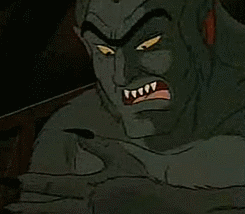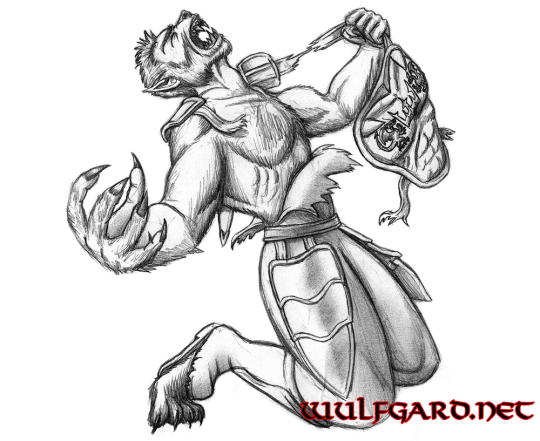Transformation Sequence
So I’ve talked about how you become a werewolf, what you’ll look like, how smart you’ll be, and even when you can expect to transform, but we’ve never covered one of the most – possibly the most – important part to any modern werewolf story…

There are a lot of terms for this. Shapeshifting, shifting, the change, turning, transformation – some people even use “metamorphosis,” but that sounds extra weird with a side of wtf to me, so I avoid that one, personally. I guess having a brother who loves insects makes me always just think of bugs for that word; it’s hard to associate with werewolves.
So, did werewolves in folklore have painful transformations, like we see so often now in pop culture? Yes, definitely. At least, sometimes.
The biggest example we see of this was covered in my post on Lycaon, but here it is again – he got to have the first (and honestly one of the only) proper werewolf transformation that we still have recorded. To quote Ovid’s Metamorphoses,
[Lycaon] howled his heart out, trying in vain to speak.
With rabid mouth he turned his lust for slaughter
Against the flocks, delighting still in blood.
His clothes changed to coarse hair, his arms to legs—
He was a wolf, yet kept some human trace,
the same grey hair, the same fierce face, the same
Wild eyes, the same image of savagery.
But they were far from always this graphic or this painful. We find other examples, like Niceros’s story, in which the werewolf in question is simply described to “suddenly” become a wolf.
Other times, we don’t even really get to hear anything about the transformation itself. Like in Bisclavret, in which the werewolf explains it to his wife saying that he “becomes a wolf” and then, later, he’s left in a room to return to his human form, no details attached in either case.
Another important point about transformations – transformations are absolutely traumatizing for the people who witness them, not just the werewolf experiencing it. This held true even in folklore. Take Niceros’s story, for example – Niceros is essentially scarred after having to watch this transformation. That makes sense – can you imagine how horrific it would be to witness, or even to hear, something like that? That’s really not something you’ll forget in a hurry – especially if it was happening to someone you care about.
So what about pop culture? Well…
Pop culture certainly ran with the idea of the painful transformation – and who can entirely blame anyone for that? It’s always fun.
While plenty of things like to keep the transformation vague or even completely off-camera (sometimes we only hear it, or see shadows on a wall), others just… put it all out there. Both can be equally effective in their own way, although I’ll admit there’s always that old saying that the best horror is what you don’t see.
Obviously the most famous werewolf transformation sequence ever, perhaps, is An American Werewolf in London, wherein it was filmed using lots and lots and lots of amazing practical effects, and the result was something CGI just can’t replicate. But basically every werewolf movie you can think of will have a transformation sequence of some type. If I posted gifs of each one, we’d be here all night – and I’d spend most of that night trying to find those gifs.
But then you have… well… the kind of transformations I absolutely have to comment on because they seriously bother me: the ridiculous shock value gore transformation sequences.
You know the ones. The ones that throw all logic out the window, where basically someone vored an entire wolf and that wolf rips out of their body when they turn, or else they graphically tear off their own skin like it’s a friggen cocoon. We see all kinds of things in sequences like this, like the human’s eyeballs falling out and blood spraying everywhere and his skin getting flayed, and a wolf muzzle poking up the person’s throat and out their mouth is always a really, really popular image (FOR SOME REASON? Seriously you see this very often in werewolf media). Like I said, swallowed a wolf. That’s not exactly transforming, now is it?
You sadly get these a lot, especially in the lower class (and by that I mean even lower class than your average werewolf movie, which is saying a lot…) werewolf flicks – plus Hemlock Grove. Please don’t ask me about Hemlock Grove. Ugh.
Don’t get me wrong. I’m all for traumatic and terrifying transformations. But shouldn’t they have their own logic about them? It should make actual sense how they transform – the stages it takes, what exactly it involves, all of it. Werewolves may not be innately “logical” given it’s a person turning into a wolf or wolf-man hybrid, but if we remove any attempt of reality even from that, I’d imagine we lose the suspension of disbelief even faster. … Plus it’s just stupid.
And, please, The Wolfman (2008), why would his fingers randomly bend completely sideways? How is that even involved in the stages and process necessary to become a wolf-man? What on earth were you thinking?

Hey, haven’t we seen this before? Yes, we have, actually! It’s the protagonist of my series turning into a werewolf. For more on the assorted werewolf fiction I write, stop by the page about my fiction.
